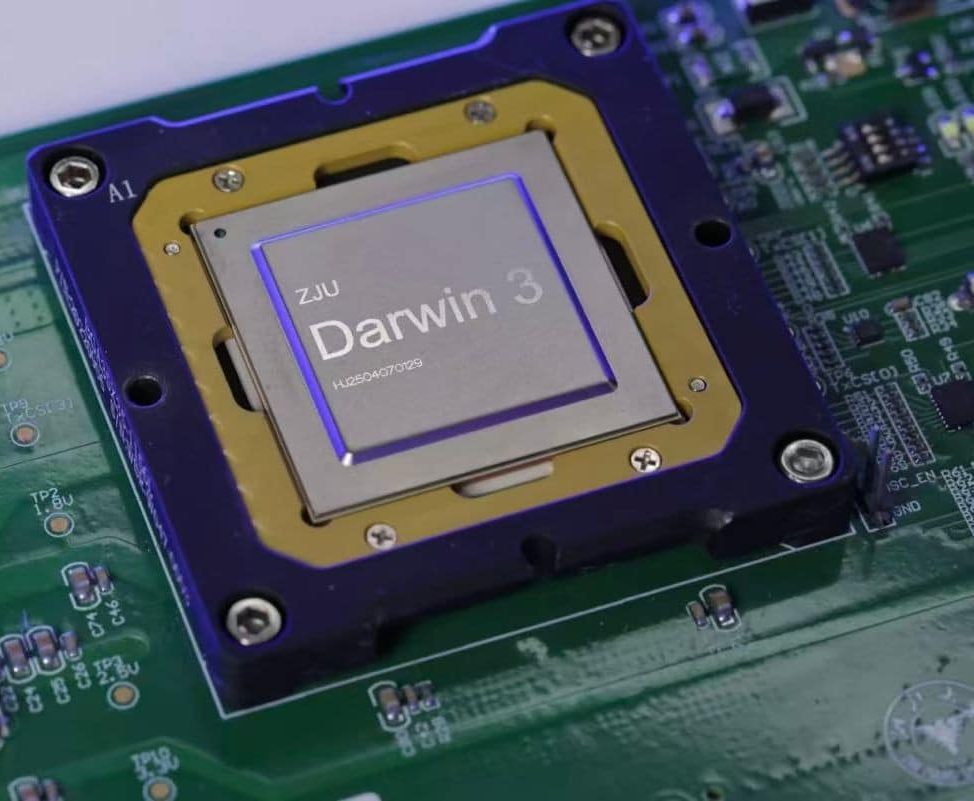Chinese researchers have announced a major breakthrough in neuromorphic computing with the launch of Darwin Monkey, a brain-inspired supercomputer that mimics the structure of a macaque’s brain. Built by Zhejiang University and Zhejiang Lab (backed by the Zhejiang provincial government and Alibaba Group), the system boasts over 2 billion artificial neurons and more than 100 billion synapses, making it the largest brain-like computer ever constructed.
Brain-Inspired Design
Unlike traditional AI systems powered by GPUs and software-based neural networks, Darwin Monkey uses spiking neural networks (SNNs), a model that replicates the way biological neurons communicate via bursts of electrical spikes. Each artificial neuron fires only after accumulating enough input, then briefly rests before responding again.
This design makes the system both more closely aligned with biological cognition and significantly more energy-efficient than conventional supercomputers. Despite running on 960 Darwin III neuromorphic chips, each supporting up to 2.35 million spiking neurons, the entire machine consumes just 2,000 watts of power, about the same as an electric kettle.
Capabilities and Applications
Darwin Monkey has already demonstrated skills in:
- Logical reasoning
- Content generation
- Mathematical problem-solving
It achieved these results using an AI model developed by Chinese startup DeepSeek. Beyond artificial intelligence, the platform is being used to simulate the brains of animals such as zebrafish, mice, and monkeys, opening new frontiers for neuroscience and biomedical research.
The system follows the team’s earlier Darwin Mouse project from 2020, which modeled 120 million neurons, roughly 1/16th the scale of today’s Darwin Monkey.
Outpacing The Competition
Until now, the record for neuromorphic systems belonged to Intel’s Hala Point, which integrates 1.15 billion artificial neurons across 140,544 processing cores. Darwin Monkey has effectively doubled that scale, positioning China as a leading force in neuromorphic computing, a field long dominated by U.S. researchers.
Its Importance
Traditional AI hardware, such as NVIDIA GPUs, is reaching physical barriers in terms of energy, latency, and memory bandwidth. Brain-inspired architectures like Darwin Monkey could point to a more sustainable way forward, offering low-power, massively parallel computing that scales beyond today’s models.
Experts suggest that neuromorphic computers could become central to future artificial general intelligence (AGI) development and serve as critical infrastructure for sovereign AI, with applications ranging from robotics to defense and edge computing.
Outlook
With Darwin Monkey, China has leapt ahead in a computing paradigm that could eventually complement, or even surpass, conventional AI accelerators. Whether it becomes a genuine path toward AGI or remains a specialized research tool, this macaque-inspired supercomputer signals that the race for the next era of AI hardware has truly gone global.


